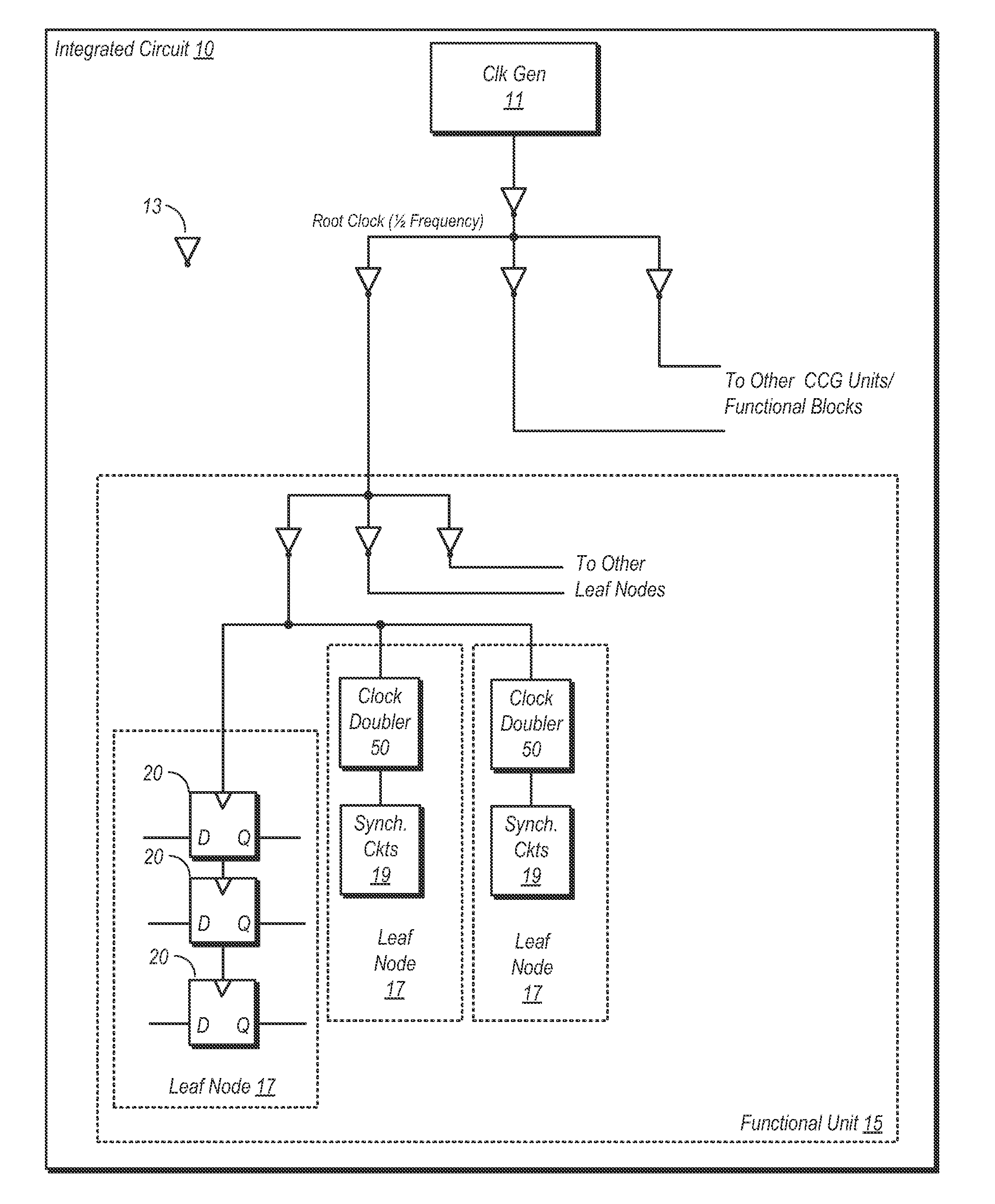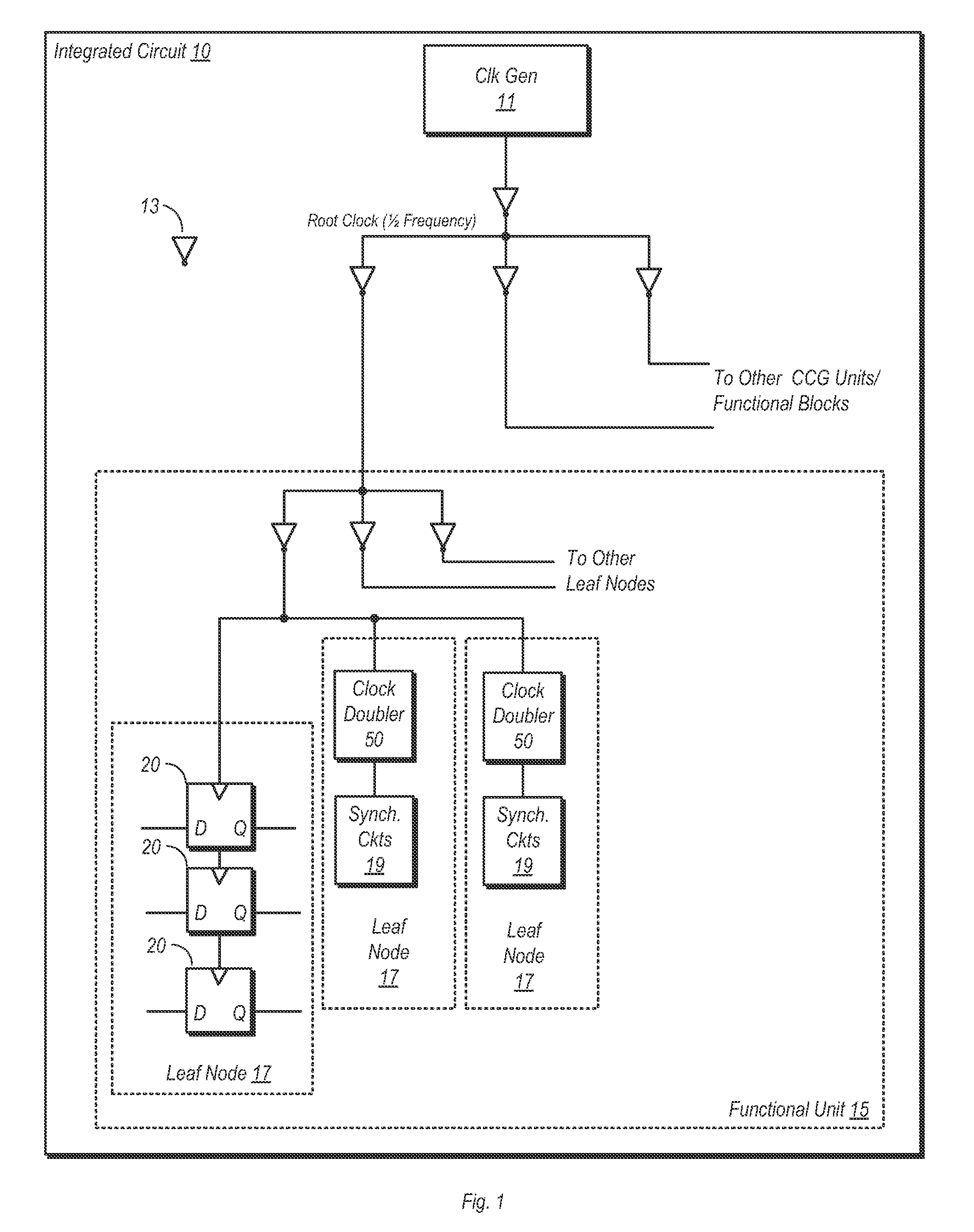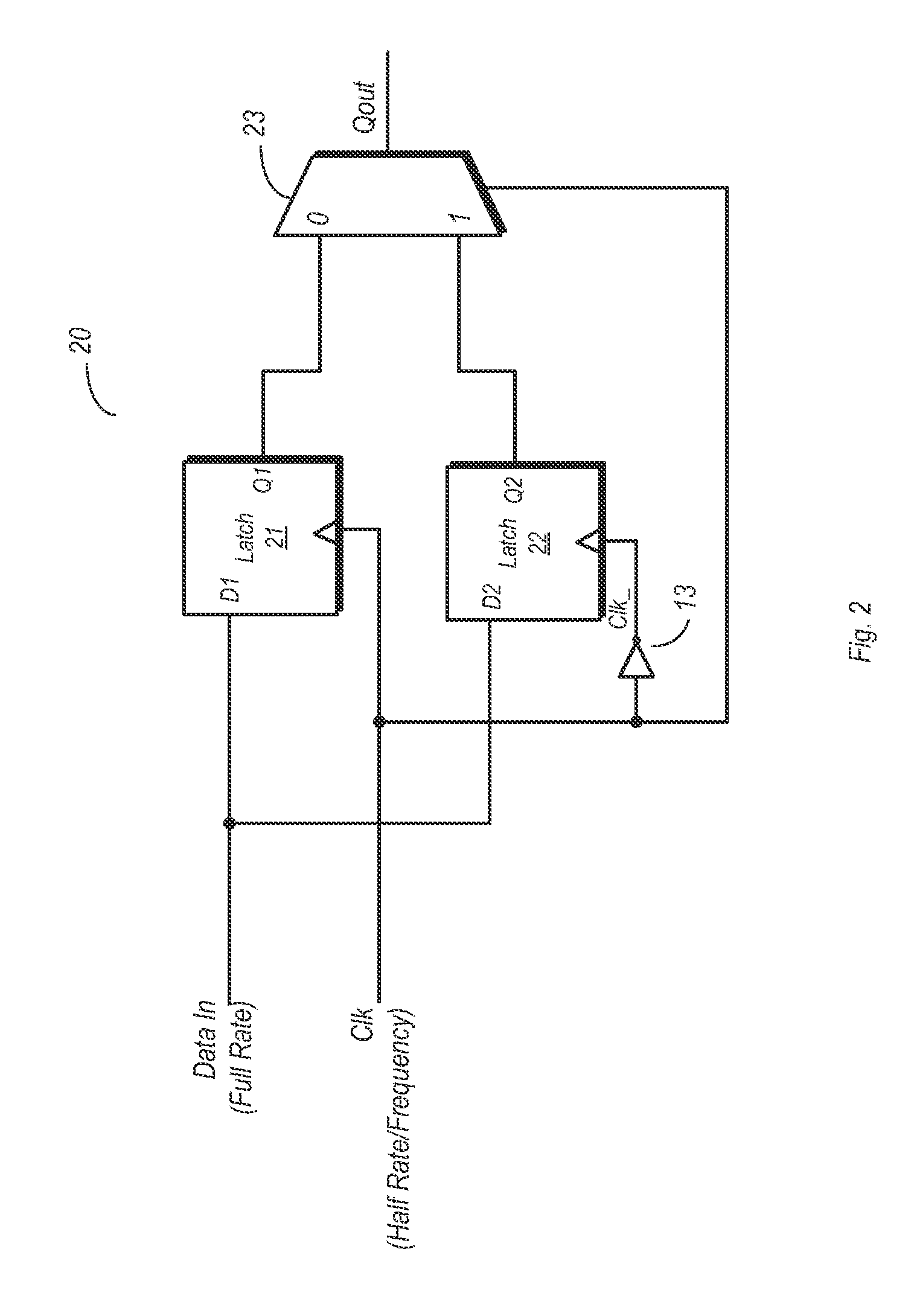Reduced Frequency Clock Delivery with Local Recovery
a clock signal and local recovery technology, applied in the direction of generating/distributing signals, power supply for data processing, pulse techniques, etc., can solve the problems of significant power consumption driver, clock signal provided to a block of circuitry may be inhibited when the circuitry is idle, clock power consumption can consume 25% of the total power consumed by an ic, etc., to achieve the effect of reducing clock power consumption
- Summary
- Abstract
- Description
- Claims
- Application Information
AI Technical Summary
Benefits of technology
Problems solved by technology
Method used
Image
Examples
Embodiment Construction
[0019]Turning now to FIG. 1, a block diagram of one embodiment of an integrated circuit (IC) is shown. In the embodiment shown, IC 10 includes a clock generator 11 configured to generate a clock signal. The clock signal output from clock generator 11, the root clock signal, is one half the operating frequency of at least some of the clock consumers within IC 10 (i.e. circuitry which is coupled to receive the root clock signal from clock generator 11). For example, the clock consumers of functional unit 15 in the illustrated embodiment may be rated for operation at 1 GHz, while the root clock signal is provided at 500 MHz.
[0020]The root clock signal may be distributed to circuitry within various functional units of IC 10 via a clock tree. The clock tree in this embodiment includes a number of inverters 13 through which the clock signal is provided down to leaf nodes 17 within the various functional units. In the illustrated embodiment, three leaf nodes 17 are illus...
PUM
 Login to View More
Login to View More Abstract
Description
Claims
Application Information
 Login to View More
Login to View More - R&D
- Intellectual Property
- Life Sciences
- Materials
- Tech Scout
- Unparalleled Data Quality
- Higher Quality Content
- 60% Fewer Hallucinations
Browse by: Latest US Patents, China's latest patents, Technical Efficacy Thesaurus, Application Domain, Technology Topic, Popular Technical Reports.
© 2025 PatSnap. All rights reserved.Legal|Privacy policy|Modern Slavery Act Transparency Statement|Sitemap|About US| Contact US: help@patsnap.com



